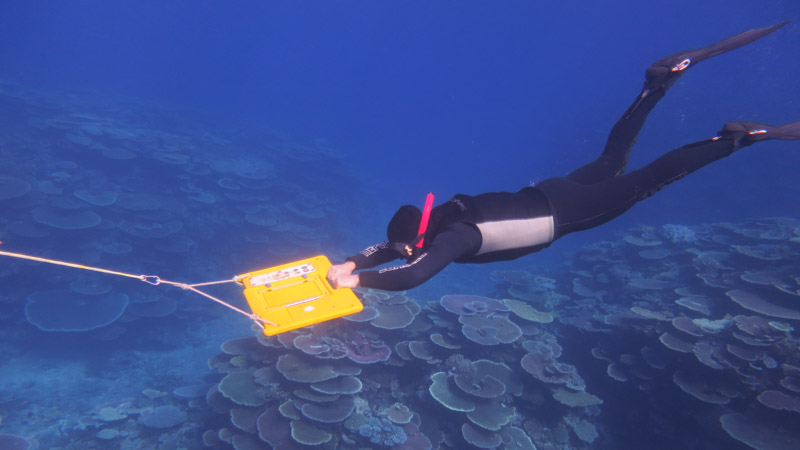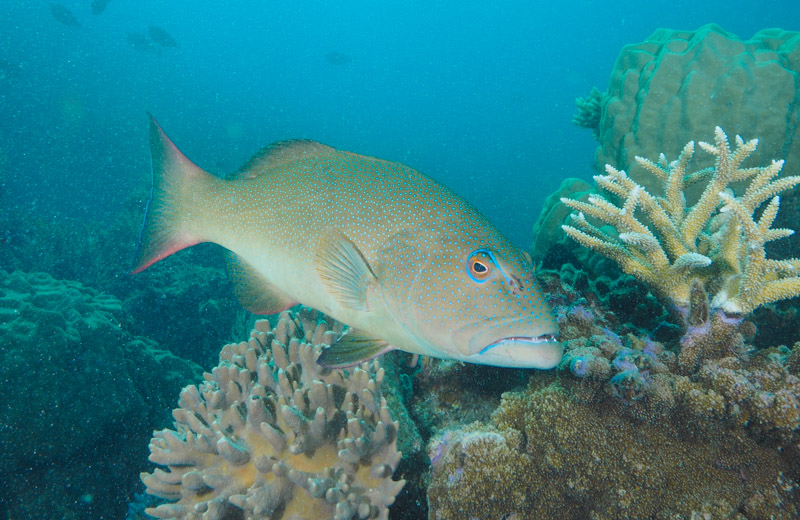
Global S&T Development Trend Analysis Platform of Resources and Environment
| Long-term monitoring shows small start to recovery on Reef, but more coral trout in Green Zones | |
| admin | |
| 2020-08-21 | |
| 发布年 | 2020 |
| 语种 | 英语 |
| 国家 | 澳大利亚 |
| 领域 | 资源环境 |
| 正文(英文) | Key points

AIMS scientists have recorded small increases in coral cover across much of the Great Barrier Reef according to underwater survey results released today. The Australian Institute of Marine Science’s (AIMS) Annual Summary Report on coral reef condition for 2019/20 is drawn from surveys undertaken between September 2019 and June 2020, with most of the reefs surveyed before last Summer’s mass coral bleaching event. AIMS Long-Term Monitoring Program Team leader Dr Mike Emslie said the bleaching event, the third such event in five years, may set back the Reef’s recovery. “The slight increases in coral cover across much of the Great Barrier Reef this past year are encouraging, but the full effect of the mass bleaching on coral mortality will not be known for several months,” Dr Emslie said.
Understanding changes in reef condition using hard coral coverCoral cover, expressed as a percentage, is a widely used measure to describe the proportion of the reef surface covered in live hard coral. The report found while there was considerable variation in coral cover between the 86 reefs surveyed, more than two thirds had slightly increased coral cover. On reefs in the Central region between Hinchinbrook Island and Mackay, hard coral cover increased on average from 12% in 2019 to 14% in 2020. Coral cover in the Northern Great Barrier Reef between Cape York and Hinchinbrook Island was stable from 2019 levels, increased from the lowest-ever level of 12% in 2017. Coral cover marginally increased in the Southern region, between Mackay and Gladstone. These slight increases indicate recovery had begun after the Reef had been subjected to multiple disturbances from bleaching, cyclones and coral-eating crown-of-thorns starfish outbreaks. This year, the Southern region had the highest cover of all three regions at 24%, and historically has been the most dynamic, with strong recovery from 2011 (9%) to 2017 (32%). This recovery was reversed from 2017 to 2020 due to crown-of-thorns starfish outbreaks in the Swains sector. Coral cover is currently just over half of what it was in 1988 in this area - 40%, the highest year recorded by AIMS. “The Reef is taking repeated hits from coral bleaching, cyclones and crown-of-thorns outbreaks. While we have seen the Great Barrier Reef’s ability to begin recovery from these pressures, the frequency and intensity of disturbances means less time for full recovery to take place” Dr Emslie said. Coral trout larger and more abundant in ‘Green Zones’
The AIMS Long-Term Monitoring Program surveys more than just coral reefs. The team also monitors fish communities, and since 2006 has been monitoring the effectiveness of re-zoning within the Marine Park. A noteworthy result this year was that coral trout numbers continued to increase on reefs inside “no-take” marine reserves compared to reefs open to fishing. Coral trout in these “Green Zones” were found to be larger and more numerous, with nearly twice as many of the fish compared to the number in “Blue Zones”. Dr Emslie said coral trout are one of the most valuable species of fish targeted by both recreational anglers and commercial fishers in the Great Barrier Reef. “As numbers of coral trout in protected areas increase and they grow larger in size, they produce more offspring. Some coral trout larvae are transported from Green Zones and re-seed populations in Blue Zones, which means more fish available for anglers. “The new result confirms that the science behind the Marine Park’s re-zoning continues to benefit Queenslanders.” Long-term monitoring to understand long-term trendsFor more than three decades, AIMS has been monitoring the Great Barrier Reef - a national icon and a key habitat provider for thousands of fish and invertebrate species. The Reef supports 64,000 jobs in Queensland and contributes $6.4 billion to the Australian economy. “This report from AIMS’ Long-Term Monitoring Program provides the most extensive and comprehensive record of coral condition of a single reef ecosystem available in the world,” said Dr Britta Schaffelke, AIMS’ Research Program Director for the Healthy and Resilient Great Barrier Reef Program. “The 35 year-long dataset of the Program helps to determine long-term trends in the condition of coral communities across the Great Barrier Reef. It shows that the condition of the mid-shelf and outer reefs have declined in response to the cumulative impacts of marine heatwaves, cyclones and outbreaks of the coral-eating crown-of-thorns starfish. “This survey season has revealed that Great Barrier Reef reefs were beginning to recover from the recent disturbance history, however the third mass coral bleaching event in five years from several weeks of sustained, unprecedented, high sea temperatures may set-back recovery. “Reefs may take up to decades to recover from severe coral loss, but the more frequent onset of these events is reducing the time for recovery.” Dr Schaffelke said. |
| URL | 查看原文 |
| 来源平台 | Australian Institute of Marine Science |
| 文献类型 | 新闻 |
| 条目标识符 | http://119.78.100.173/C666/handle/2XK7JSWQ/290788 |
| 专题 | 资源环境科学 |
| 推荐引用方式 GB/T 7714 | admin. Long-term monitoring shows small start to recovery on Reef, but more coral trout in Green Zones. 2020. |
| 条目包含的文件 | 条目无相关文件。 | |||||
| 个性服务 |
| 推荐该条目 |
| 保存到收藏夹 |
| 查看访问统计 |
| 导出为Endnote文件 |
| 谷歌学术 |
| 谷歌学术中相似的文章 |
| [admin]的文章 |
| 百度学术 |
| 百度学术中相似的文章 |
| [admin]的文章 |
| 必应学术 |
| 必应学术中相似的文章 |
| [admin]的文章 |
| 相关权益政策 |
| 暂无数据 |
| 收藏/分享 |
除非特别说明,本系统中所有内容都受版权保护,并保留所有权利。
修改评论